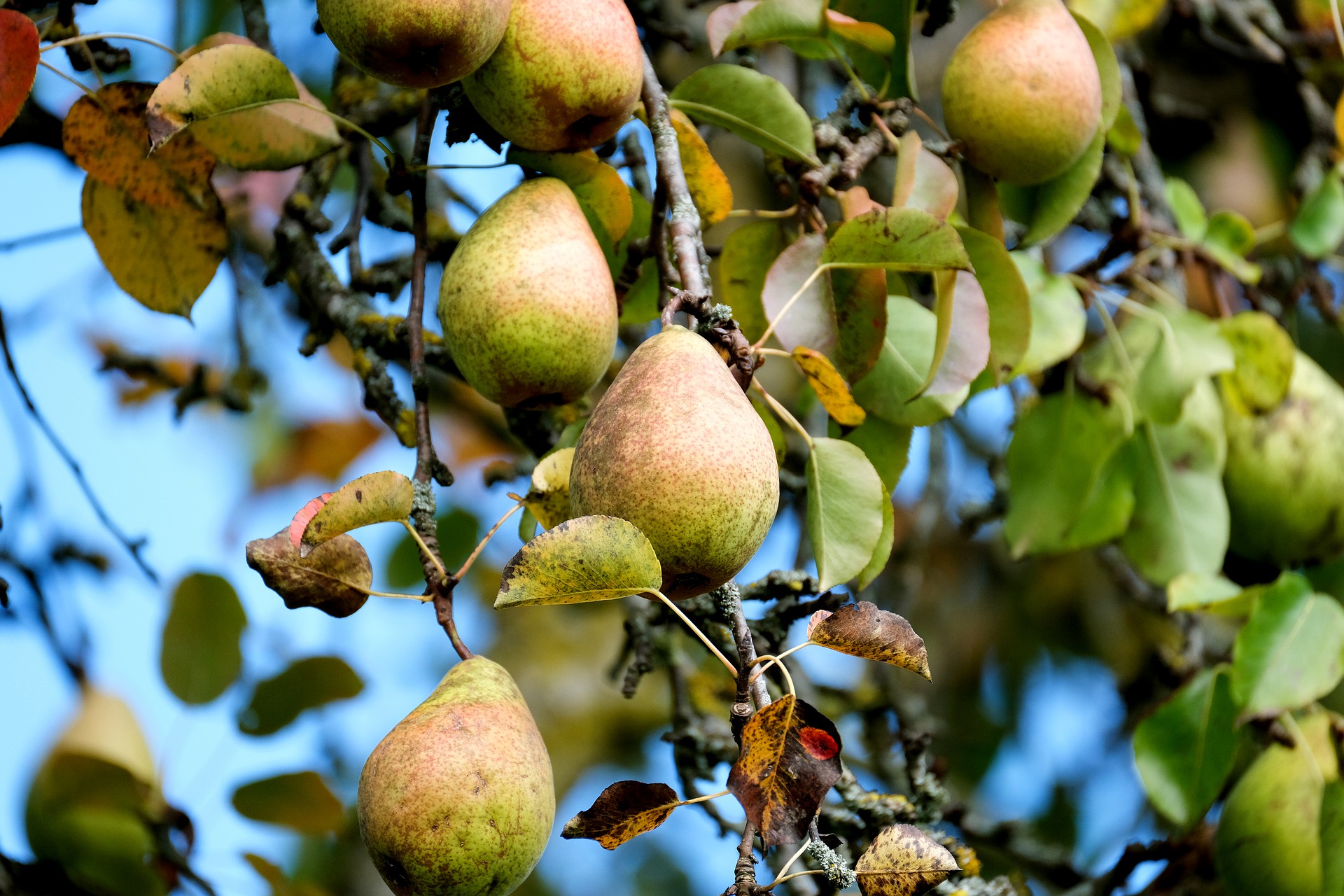The raising and maintenance of pear plantations largely depends on relatively early flowering in the spring, so that the flowers and transplanted fruits do not freeze, it is necessary to choose a vineyard location on the north or northeast side or a location outside the vineyard zone with a south or southeast location.
Choice of position for raising pear plantations
The altitude is best from 400 to 500 m, with a slope of less than 6°. According to soil requirements, it gives the best results on sandy-loamy to loamy, permeable, deep soil with a neutral to slightly acidic reaction, an amount of humus greater than 3% and a smaller amount of active lime if it is grafted on quince.


Preparing the soil for planting pears
After the best location has been chosen, soil preparation for planting follows. Before the actual processing, the soil must be cleaned of stones, stumps, roots of other plants and other plant remains.
This is followed by planning, which removes all the depressions and protrusions on the plot where the orchard will be built. Strongly inclined terrains need to be terraced. The plot is further prepared by deep plowing and undermining the entire surface to a depth of 60 to 80 cm. Then a soil sample is taken for chemical analysis in order to determine the physical properties and chemical composition of the soil on the plot. If it is determined that the soil is not sufficiently provided with biogenic elements, then before deep plowing, meliorative fertilization should be carried out, which will improve the supply of the soil at greater depths. Most often, 20 to 30 t/ha of manure, 400 kg/ha of superphosphate and 500 kg/ha of potassium sulfate are applied. In the case when there is not enough organic nutrients, it is recommended to sow the plot with plants for green fertilization (fodder peas, clover, rye). In the spring, those plants need to be fed, and they are plowed when they are in full bloom (May). After that, before autumn, and in late summer, the soil is deeply loosened so that pears can be planted in autumn.
Selection of pear planting material
The raising and maintenance of pear plantations largely depends on the quality of the planting material itself, it is necessary to plant one-year, virus-free planting material of high quality, i.e. seedlings with a well-developed root system and a mature above-ground part (both conductors and buds).
In addition to the quality of seedlings, their transportation and storage until planting is also important. At no time should the seedlings dry out.


Pear planting time and technique
The planting time for pears is the same as for apples. Autumn planting is recommended. After deep cultivation of the soil in August, the rough furrow made is left in the soil until the beginning of November, when the seedlings are procured.
Then, just before planting, the soil is deepened, rows are staked out and planting is done. The distance between the rows depends on the lushness of the substrate and the variety. For modern plantations with good fruit mechanization, this distance should not be greater than 3.2 m. The distance between the rows depends on the variety, but in principle it can be said that 1.2 to 1.5 m is sufficient for most varieties. to that if the pear is grown in the form of a slender spindly bush. Immediately after planting or by the end of spring at the latest, the young orchard should be fertilized with manure. Fertilization can be carried out individually for each tree with 20 to 30 kg of manure in a bowl around the seedling or by plowing a furrow about 70 cm from the row of seedlings and plowing the manure that is placed in the plowed furrow. This second method is recommended for high planting density because it is much cheaper and still effective enough.
Maintenance of pear plantations
Maintenance of pear plantations is exactly the same as for apples. Therefore, it is recommended that the soil between the rows be maintained by arranging a well-kept lawn, i.e. that it be mulched 6 to 8 times during the growing season, and that herbicides be applied within the rows between the trees to keep that part free of weeds.
In the conditions of coastal Croatia and the semi-arid parts of Slavonia and Baranja, this type of maintenance system can only be recommended if irrigation is provided. In the event that there is no irrigation system in the orchard, then a soil maintenance system is recommended between the rows with constant cultivation (in the fall with a rotary hoe, and in the summer with a chisel), and within the rows with the application of herbicides.
Irrigation of pear
It is preferable to irrigate pears from planting and during fruiting during drought.
The drip irrigation system or mini-sprinklers are mostly used. The depth of wetting of the soil for pears during irrigation is from 0.40 to 0.55 m.













































